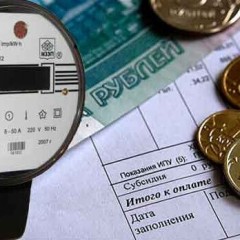How to connect a two-tariff electricity meter
How to switch to multi-tariff electricity metering
In order to use this tariff, you will need not only the two-tariff metering device itself, that is, the electric meter, but also the design of this service with the electricity supplier. To do this, you must:
- Go to the organization that is your supplier.
- Contact the department for drawing up power supply contracts and make sure that it is possible to switch to double tariff accounting.
- Write a statement about the transition to a new tariff.
- Pay the cost of removing the old meter, the cost of a new one with installation, connection and configuration.
Wiring diagram for a double tariff meter
The connection and installation of a two-tariff electricity meter should be carried out only by specialists who have access to work in electrical installations and an electrical safety group of at least the third. In order to install and then connect the meter with your own hands, you must understand the danger of electric shock.
Two-tariff meters, as well as single-tariff meters, can be designed for different mains voltage:
- 220 Volt - a single-phase network, that is, it is used phase and zero;
- 380 Volt - three-phase voltage, the connection has three phases.
Their connection schemes are basically identical, only they have their differences in the number of terminals for connection and, as a result, the corresponding protective and switching equipment designed for mains voltage. For an apartment, 220 V is most often characteristic, and for a private house 380 V may be acceptable if equipment with three-phase asynchronous motors. A feature of some three-phase meters is the possibility of using them for single-phase networks.
Here is the connection diagram for a single-phase two-tariff electricity meter:
The presence of grounding is not mandatory here, but it is still recommended to organize it, since even the most modern residual current device, cannot provide reliable protection against electric shock during breakdown. Very often, work is carried out when voltage is already present on the upper terminals of the input automatic machine, so before you go directly to the connection, you should disconnect the voltage and check its absence on the live parts on which the work will be carried out.
The connection diagram of a three-phase two-tariff electric meter looks like this:
Safety rules and connection principle is similar to the previous diagram. If the consumer network is powerful and the load current is greater than the meter can pass through itself, then the connection occurs through a current transformer. Almost all electric meters are designed for current from 5 to 50 amperes. For high-voltage circuits in production, such transformers are mandatory, since with their help not only the consumed electricity is recorded, but also the electrical equipment is protected from emergency conditions.
The video below clearly shows the connection of a single-phase and three-phase electric meter to the network:
The principle of removal and calculation of spent energy
The two-tariff meter is a modern meter for electricity metering, which is able to show and record not only the amount of energy spent, but also the date, time, characteristics of the power supply modes. In order to find out how much electricity is consumed during a given period of time, it is necessary by pressing the buttons on the metering device to switch to the display mode, where you can see data on day and night electricity use. Knowing how many kilowatts were spent in the daytime and, accordingly, at night, you can find out how much energy was consumed from the network per day, per month, per week, and so on. How to calculate the amount to pay? To do this, the recorded difference is multiplied by the daily or night tariff, which may differ depending on the region where the consumer is located.
The video below clearly shows the initial setup of a multi-tariff electric meter using the example of model CE102M R5:
Of course, this form of accounting has its enormous advantages and is quite beneficial for the consumer, who, for example, can transfer part of his affairs to night time, since modern devices are programmed and turned on automatically at the right time. However, if only the refrigerator and lighting are included in the network, then you need to think about the effectiveness of the two-tariff payment and accounting regime, and calculate how long all the costs of new equipment and electrician services will pay off. We hope you understand how to connect a two-tariff electricity meter in 220 and 380 Volt networks. If you have questions, you can ask them in the comments under the article.
It will be useful to read:










The connection diagram of the meter in the article is incorrect, dangerous, and is prohibited by the PUE. So you can not connect in any case. The neutral wire must not be interrupted by a counter. There should be a branch off the zero bus.
What is the PUE clause?
Apparently he was trying to talk about the PEN conductor ...